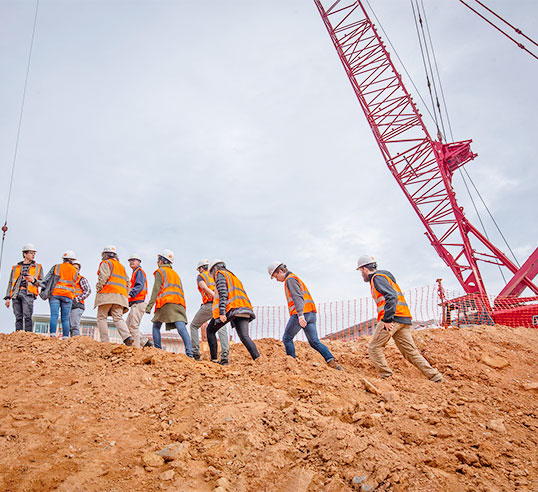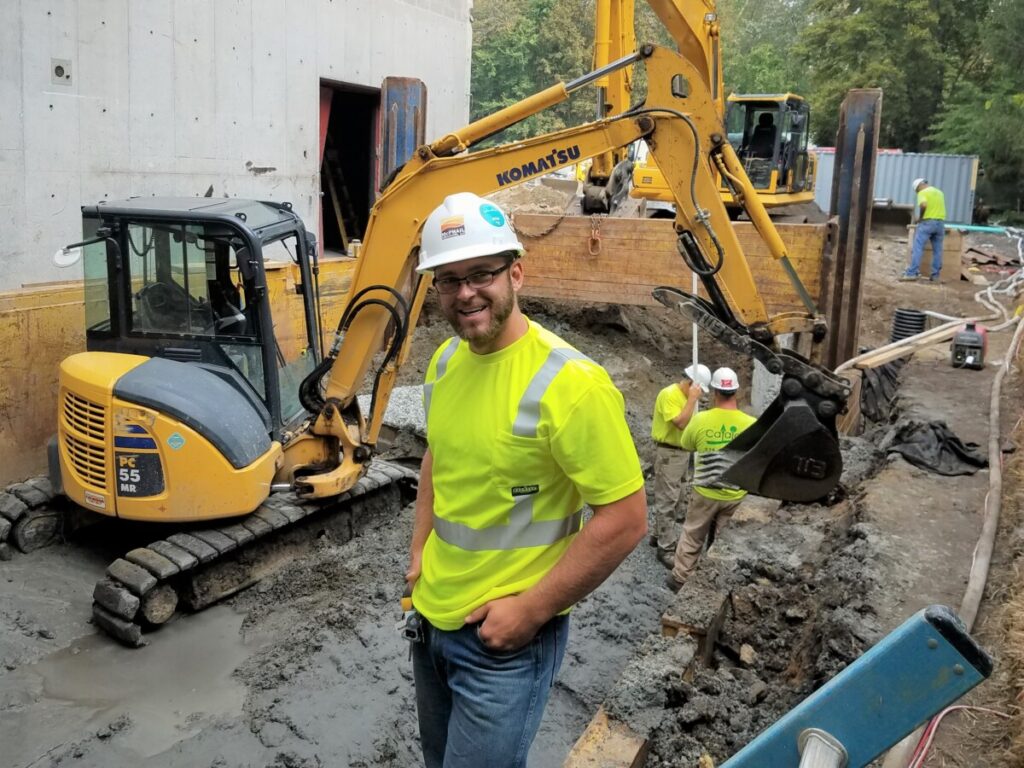Navigating the Intricacies of Geotechnical Eng Projects
Navigating the Intricacies of Geotechnical Eng Projects
Blog Article
The Essential Payments of Geotechnical Designers in Examining Dirt Actions and Structure Design for Lasting Framework Advancement
Geotechnical designers serve as a cornerstone in the world of sustainable framework development, where their competence in evaluating dirt habits directly influences the safety and long life of structures. By using sophisticated strategies such as Basic Infiltration Tests and Cone Infiltration Testing, they carefully examine soil residential properties, leading to educated decisions on foundation design. These analyses not only alleviate dangers connected with differential settlement however also lead the way for ingenious, ecologically aware practices. As we check out the essential duty they play, the implications of their contributions elevate important concerns regarding the future of framework resilience and sustainability.
Role of Geotechnical Engineers

Along with site examinations, geotechnical engineers evaluate possible dangers such as soil liquefaction, incline stability, and groundwater issues. They use sophisticated engineering concepts to establish solutions that minimize these dangers, guaranteeing that designs follow appropriate codes and standards. Their job typically includes collaboration with various other engineering self-controls, architects, and ecological scientists to develop integrated strategies to facilities growth.
Additionally, geotechnical designers add to sustainable practices by promoting making use of products and techniques that minimize environmental impact. With their thorough understanding of soil mechanics and geology, they play an important duty in fostering risk-free, resistant, and sustainable facilities that fulfills the demands of society while securing the setting.
Soil Habits Analysis Strategies
Understanding soil actions is fundamental to informed decision-making in geotechnical engineering, as it straight affects the layout and construction processes. Various evaluation strategies are employed to assess dirt buildings, ensuring precise forecasts of its performance under different loading conditions.
One primary method is the Common Penetration Examination (SPT), which provides insights right into soil density and uniformity via the resistance encountered during infiltration. Cone Penetration Testing (CPT) uses a constant profile of soil stratification and in-situ strength criteria, making it possible for an extra in-depth understanding of subsurface problems.
Lab tests, such as Atterberg limitations, unconfined compressive strength, and triaxial tests, are necessary for defining soil actions under regulated problems. These examinations promote the resolution of important specifications, including shear strength, leaks in the structure, and compressibility.

Foundation Layout Concepts
Structure layout principles are important for making certain the stability and longevity of structures, as they dictate just how loads are transferred from the superstructure to the underlying dirt. These concepts incorporate numerous factors to consider, consisting of load-bearing capacity, settlement, and lateral stability. An extensive understanding of dirt technicians is important for geotechnical designers to examine the communication in between the soil and the learn the facts here now foundation.
One key principle is the ideal option of structure type, which might consist of superficial foundations, such as spread footings, or deep structures, like heaps or caissons, depending upon soil conditions and architectural lots - geotechnical eng. The foundation needs to be made to lessen differential negotiation, which can result in structural damage

Lasting Facilities Practices
Just how can we efficiently incorporate sustainability into framework practices? Sustainable infrastructure techniques begin with detailed website evaluations, which review soil habits, local ecological communities, and resource schedule.
Furthermore, using innovative building strategies, such as using low-impact structures and recycled products, considerably lowers the carbon footprint of infrastructure jobs. Geotechnical engineers play a critical function in picking appropriate materials that enhance toughness and sustainability, such as utilizing geo-synthetics to boost dirt stability and reduce disintegration.
Additionally, lasting framework practices need ongoing monitoring and maintenance to guarantee that frameworks remain resilient over time. This includes implementing adaptive management strategies to attend to prospective ecological adjustments. Partnership among stakeholders-- including engineers, local areas, and policymakers-- is critical for incorporating sustainability objectives into project planning and their explanation implementation. Inevitably, these techniques not just add to the durability of structures yet additionally promote a much healthier atmosphere, lining up infrastructure growth with wider sustainability goals.
Case Researches and Applications
Case researches in geotechnical engineering give useful insights right into the useful applications of dirt actions and sustainable infrastructure methods. One noteworthy example is the construction of the Burj Khalifa in Dubai, where substantial soil testing and evaluation were carried out to evaluate the one-of-a-kind difficulties positioned by the region's loose sand and high water table. Geotechnical designers utilized progressed methods such as vibrant penetrating and cone penetration screening to determine the soil's load-bearing ability, eventually bring about the design of a deep foundation system that sustains this iconic structure.
One more essential case is the remediation of the San Francisco-Oakland Bay Bridge after the 1989 Loma Prieta earthquake. Geotechnical analyses disclosed the need for soil stabilization methods, including grouting and dirt nailing, to improve the seismic strength of the structure. These treatments not only improved the bridge's safety however likewise added to its long life and sustainability.
Such instance researches exhibit just how geotechnical engineers play an important function in comprehending dirt habits and using cutting-edge solutions to ensure the structural integrity and sustainability of infrastructure projects. civil consulting engineers. Their expertise is vital in attending to the complicated tests presented by different dirt conditions across diverse geographic locations
Verdict
To conclude, the payments of geotechnical designers are crucial for the evaluation of soil behavior and the design of structures, which are essential for sustainable framework growth. Via the application of innovative screening methods and ingenious materials, these professionals ensure the stability and safety of structures while decreasing ecological impacts. The assimilation of sustainable techniques promotes resilience in facilities projects, highlighting the value of collaboration amongst stakeholders to achieve reliable building remedies that satisfy both ecological and societal requirements.
Geotechnical designers serve as a keystone in the realm of lasting infrastructure advancement, where their knowledge in analyzing soil actions directly influences the safety and security and longevity of structures.Geotechnical designers play an important duty in the style and building and construction of infrastructure by examining dirt and rock behavior to make sure security and safety. A complete understanding of dirt auto mechanics is crucial for geotechnical engineers to examine the communication between the foundation and the soil.
Geotechnical assessments exposed the requirement for dirt stablizing strategies, consisting of grouting and dirt nailing, to enhance the seismic resilience of the foundation.In conclusion, the contributions of geotechnical engineers are crucial for the evaluation of dirt habits and the style of structures, which are crucial for lasting framework growth.
Report this page